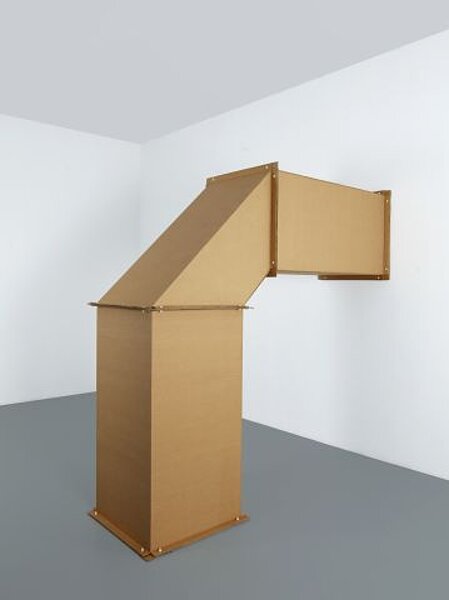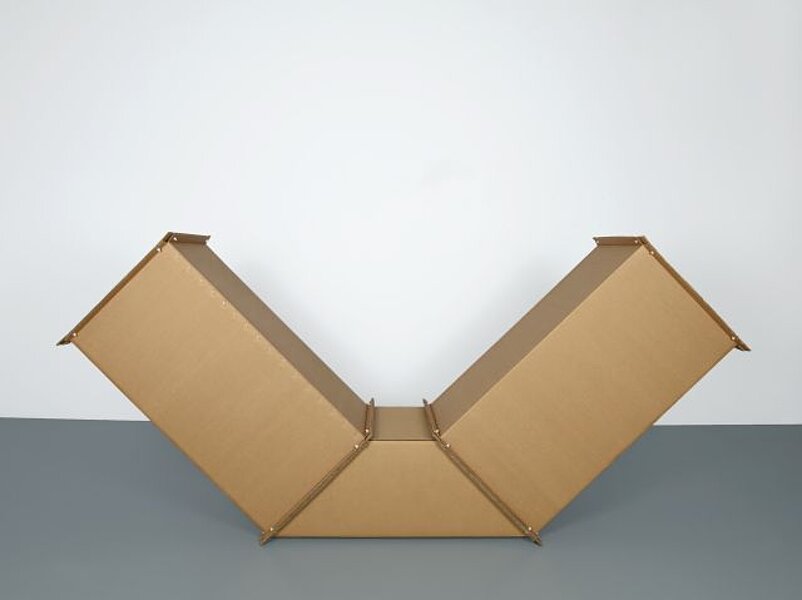
Posenenske, Charlotte
Vierkantrohre (Serie DW)
1967
| Object description | Cardboard, metal, plastic |
|---|---|
| Object category | sculpture |
| Material | |
| Dimensions |
Detailmaß:
height: 80 cm,
width: 80 cm,
depth: 143,5 cm,
height: 45 cm,
width: 80 cm,
depth: 143,5 cm,
height: 38,5 cm,
width: 80 cm,
depth: 80 cm,
height: 54,5 cm,
width: 80 cm,
depth: 143 cm
|
| Year of acquisition | 2004 |
| Inventory number | MP 1/0 |
| Creditline | mumok - Museum moderner Kunst Stiftung Ludwig Wien, Schenkung Burkhard Brunn |
| Rights reference | Posenenske, Charlotte |
| Further information about the person | Posenenske, Charlotte [ULAN] |
Charlotte Posenenske’s work “Vierkantrohre Serie DW [Rectangular Tubes Series DW]” consists of a four-part modular set: two large tubes of different sizes, a connector and an elbow joint that makes a change of direction possible. The artist chose cardboard as the material, consciously simple forms and cheap materials which she then produced in series. She allowed unlimited reproduction of her objects. So even after her death her works can be made. The increase in value that motivates some buyers is thus largely ruled out—as the artist intended. The “Vierkantrohre Serie DW” was first shown in 1967 during an exhibition where—as is stated in the announcement—“you cannot buy anything, that is they are things that resist being assimilated into the established apparatus of the art trade”. Posenenske presented the rectangular tubes on the opening evening during a performance. The instructions that the artist gave for installing and de-installing the tubes were carried out by a team of workers. It was intended that the public would take an active part in the design process. The work series brings seriality and alterability into a productive relationship: the elements of a series are always the same but they interact with the situation in each space in different ways. In 1968, at the age of 38, Posenenske ended her artistic career. She could no longer see any potential for social change in art, so she began to study sociology.
© mumok – museum moderner kunst stiftung ludwig wien





